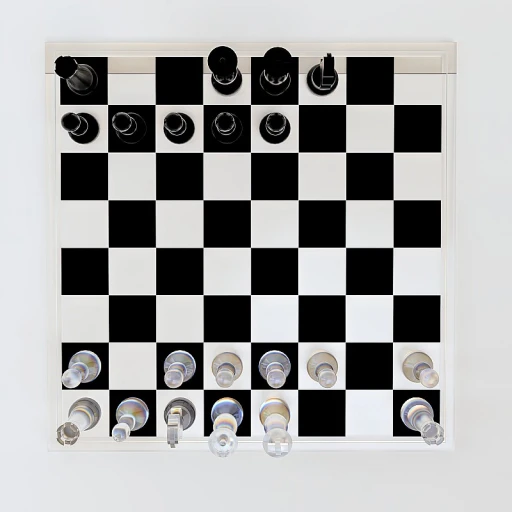
The Importance of Identifying Client Needs
Recognizing the Criticality of Client Understanding
Before a business can hope to succeed, it must place a priority on understanding clients and their specific needs. Identifying client needs is not merely a process; it is a fundamental pillar that supports customer needs and expectations. Engaging in a needs assessment allows businesses to tap into the potential of understanding clients at a deeper level.
This is not about making assumptions but rather about active listening and effective communication. These are key components of understanding client needs, as they require a business to look beyond the surface and probe into client goals and pain points. By focusing on these areas, a business can ensure that its product or service meets the actual needs expectations of its customers.
Understanding customer needs also helps in building long-term client relationships. It is an ongoing process that adapts as the customer’s requirements and expectations evolve. This ongoing dialogue fosters trust and can significantly contribute to business success.
Ultimately, the goal is to align the product or service offering with the clients’ needs and expectations, ensuring that the business is not just meeting, but exceeding those needs. For those looking to further enhance these abilities, skill development plays a crucial role in enhancing capabilities and aligning business operations with client expectations.
Techniques for Uncovering Client Needs
Effective Methods to Discover What Clients Truly Need
To achieve long-term success in business, comprehending the specific needs and expectations of your clients is undeniably crucial. This understanding forms the foundation of building strong client relationships and, ultimately, delivering a product service that truly meets client needs. Embarking on this journey requires a mix of effective communication and analytical techniques. Here are some strategies that can help foster a deeper understanding of your clients' needs and goals:- Active Listening: By paying close attention to clients when they communicate their concerns or requirements, you can gain critical insights into their expectations. Active listening serves as a cornerstone for understanding clients and their unique situations.
- Asking the Right Questions: To fully capture customer needs, asking thoughtful, open-ended questions is essential. This encourages clients to share more about their goals and pain points, opening doors to opportunities for tailored solutions.
- Needs Assessment: Conducting a comprehensive needs assessment helps clarify both the stated and underlying needs of clients. This tool enables businesses to align their services and products with client requirements effectively.
- Offering a Free Trial: A free trial of your product or service can provide potential customers an insight into how their specific needs will be met, thus fostering better understanding and building trust.
- Analyzing Customer Feedback: Gathering and carefully analyzing client feedback allows businesses to refine their services, directly addressing customer expectations and contributing to enhanced client satisfaction.
Challenges in Understanding Client Needs
Addressing the Complexities in Grasping Client Expectations
Understanding client needs can be fraught with challenges that businesses must adeptly navigate to foster long-term client relationships. At the heart of this process is ensuring effective communication, yet several hurdles often stand in the way. First and foremost, miscommunication can arise from assumptions made by either party. Clients may presume that service providers fully comprehend their needs without detailed discussions. Conversely, businesses might believe they have a firm grasp on client goals, only to find out later that their understanding was off the mark. This discord can often be minimized through active listening and asking the right questions, ensuring that all needs and requirements are transparently assessed. Another significant challenge lies in articulating the specific needs and expectations of clients. Often, customers may struggle to clearly define what they require, especially if they're unfamiliar with the available offerings or options. This is where businesses can step in with a needs assessment process, helping to clarify client goals and align them with the product or service being discussed. Time constraints also present a challenge, as busy clients may not have the opportunity to sit down for lengthy discussions, making it essential to make the most out of every interaction. Businesses can adopt strategies such as offering a free trial to give potential customers a tangible experience of the product service, allowing clients to form a clear impression of how their specific needs are addressed. Moreover, understanding the hidden pain points can be difficult without initiating an in-depth exploration of the client's business and its idiosyncrasies. This requires not only patience but also a willingness to view the world from the client's perspective, sometimes necessitating significant adaptations in learning strategies that are client-centric. A crucial aspect often overlooked is managing expectations. Unrealistic expectations can lead to dissatisfaction even when a good service or product is provided. It becomes necessary for businesses to clearly communicate what is feasible and what might be beyond their scope, ensuring expectations are aligned from the onset. Finally, overcoming the challenge of building trust requires consistency and reliability over time. Successful businesses understand that it’s not just about sealing the deal but nurturing the relationship with ongoing communication and prompt customer service, considering it as part of a holistic approach to understanding clients. For more insights into techniques that enhance understanding client processes, check our effective documentation policy for continuous learning. This resource delves into crafting strategies that align with client needs and improving product service alignment with customer expectations.Adapting Learning Strategies to Client Needs
Refining Learning Tactics to Align with Client Requirements
Understanding the unique requirements of each client is crucial for businesses striving for success. It's not all about knowing what a client needs at a generic level, but about tailoring strategies to meet those specific needs and expectations. Adapting learning strategies to align with client requirements can be a game-changer in building stronger client relationships and ensuring long-term success.- Active Listening and Communication: Effective communication is paramount. By actively listening to clients, businesses can gain insights into their goals, requirements, and expectations. Active listening helps in identifying both spoken and unspoken needs, providing a clearer understanding of what clients truly want. This understanding is pivotal in adapting learning strategies that are client-focused.
- Customized Solutions: Every client has distinct needs. Adapting services or products to meet these specific needs can greatly enhance client satisfaction. Offering a free trial can also be instrumental in demonstrating how tailored solutions meet or exceed client requirements.
- Continual Needs Assessment: As business environments and client expectations evolve, regular needs assessments are crucial. They help in understanding client dynamics and adapting learning strategies accordingly. This ongoing process ensures that client needs are continuously met and any potential changes in their expectations are anticipated and addressed promptly.
- Feedback and Iterative Improvement: Gathering feedback from clients is not just about understanding past performance. It also serves as a vital tool for iterative improvement. By leveraging client feedback, businesses can refine their learning strategies to better align with the client’s specific needs, thus fostering better customer relationships and enhancing service offerings.












